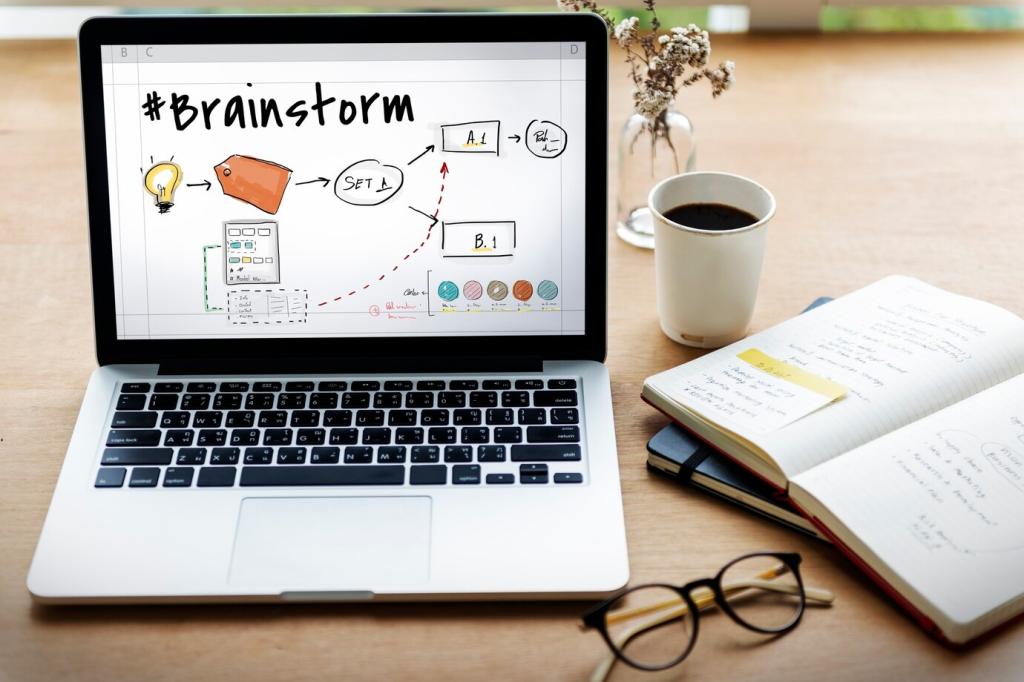Enhancing Interior Design Brands with SEO Copywriting
Today’s chosen theme: Enhancing Interior Design Brands with SEO Copywriting. Step into a world where polished words guide eyes to gorgeous spaces, and search intent meets aesthetic intent. Stay with us, subscribe for fresh insights, and tell us how your studio wants to be discovered.

Tone Palettes for Distinct Design Niches
Minimalist studios benefit from clean, confident phrasing; luxury ateliers thrive on evocative detail; family-friendly designers shine with warm clarity. Calibrate vocabulary, sentence cadence, and metaphor to mirror your preferred materials, spatial philosophy, and project tempo, building memorability and organic relevance.
Keyword Storytelling Instead of Keyword Stuffing
Transform target phrases into narrative anchors. Instead of repeating “Scandinavian kitchen design,” tell a story about light, workflow, and storage. Use the term naturally in headlines, captions, and microcopy, then expand with related vocabulary that enriches meaning and signals expertise to search engines.
Consistency Across Channels Without Losing Freshness
Maintain a recognizable voice across your website, portfolio captions, email, and social. Create a brand lexicon and editorial guardrails, then vary rhythm and specificity per format. Consistency builds authority; subtle variation keeps content alive and encourages readers to subscribe for your next studio update.
Keyword Research Tailored to Aesthetics and Buyer Intent
Capture early-stage explorers with mood-driven phrases, guide evaluators with comparison queries, and convert action-ready visitors with service-oriented terms. Build content clusters that escort readers from pinboards to proposals, and invite them to comment about which stage best fits their current journey.

Optimized Page Architecture for Visual-First Audiences
Pair a concise headline with a sensory subheading that frames the main image. Establish space, mood, and function in under two sentences. Add a single, clear action that respects browsing rhythm—download a lookbook, view a project, or explore your signature design approach in depth.
Anticipate questions: timelines, collaboration steps, material sourcing, and sustainability. Use scannable sections with descriptive H2s, then embed proof through measured outcomes. Invite readers to share their biggest uncertainty, and we will feature solutions and examples in the next article for clarity.
Think of links as pathways through a gallery. From each project, steer visitors to relevant styles, materials, and similar rooms. This deepens session time, strengthens topical authority, and helps readers discover the exact project that mirrors their aspirations. Encourage comments on preferred pathways.
Content Formats That Convert for Studios and Showrooms
Tell the story of a dim, boxy loft becoming a luminous family hub, then quantify results: increased storage capacity, improved light distribution, and flexible zones. An anecdote: one boutique studio doubled inquiries after publishing a ‘Japandi kitchen’ case study with clear before-and-after problem solving.


Content Formats That Convert for Studios and Showrooms
Curate seasonal or style-driven lookbooks; write descriptive alt text about materials, light, and layout intent. Add brief vignettes to guide interpretation. Invite visitors to save favorites, then comment on which palette speaks to them. This engagement builds affinity while strengthening semantic relevance.
Local SEO for Design Practices and Boutique Studios
Reference local building stock, light patterns, and common room proportions. Connect design recommendations to climate and cultural life. For example, terrace-friendly storage in Lisbon differs from compact bay-window seating in San Francisco. Invite readers to share neighborhood quirks we should explore next.
Local SEO for Design Practices and Boutique Studios
Write pages for each city or district with relevant projects, logistics, and style preferences. Include transit notes, material sourcing partners, and timeline considerations by area. This specificity is useful for humans and clear for search engines, prompting qualified consultations from nearby homeowners.


On-Page Craft: Headings, Metadata, and Visual Accessibility
Headings That Orient and Invite Exploration
Use descriptive H1 and H2 tags that explain value, not just style names. Pair them with concise summaries to help scanners decide. Headings should guide visitors through a narrative arc, like a thoughtfully sequenced showroom, encouraging deeper exploration and natural time on page.


Metadata That Wins Clicks Without Overpromising
Craft titles that blend style keywords with outcomes, like improved light or better flow. Write meta descriptions with a clear benefit and subtle specificity. Avoid generic superlatives; favor sensory detail and realistic outcomes. Prompt readers to bookmark pages that consistently deliver on their promise.



Join our mailing list
